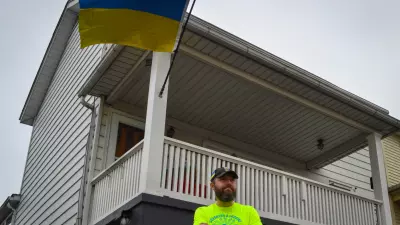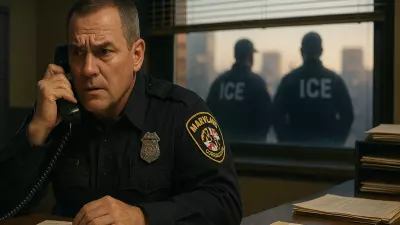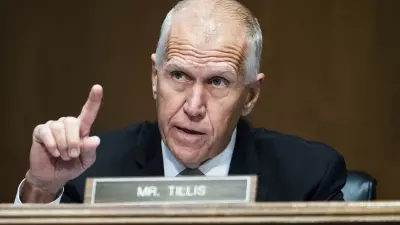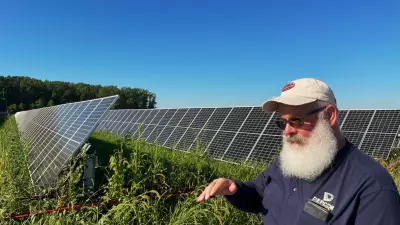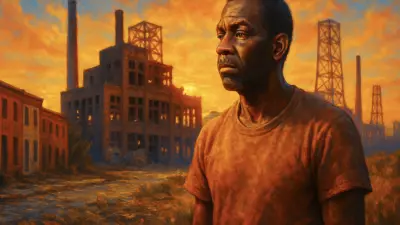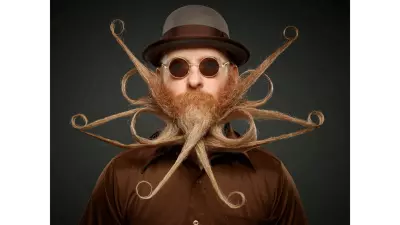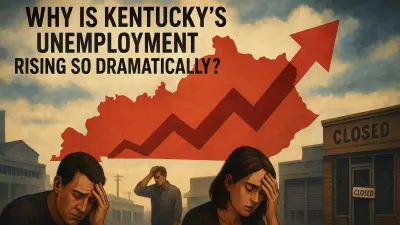The Keystone State has a sizable Ukrainian-American population going back several generations that is deeply concerned about the fate of their ancestral homeland.

At first, Yelena Smekodub didn’t believe her Russian sister-in-law when she said the country was preparing for war.
“She’s like, ‘They’re preparing. They’re building bomb shelters,’” Smekodub said. “I’m like, ‘Your sister is off her rocker. She’s nuts. This is never gonna happen.’”
This was back three years ago, but she remembers the conversation vividly. Not because her sister-in-law said something crazy, but because she was right.
War was coming.
On Feb. 24, 2022, Russia launched a full invasion of Ukraine.
“It was unbelievable,” Smekdub said. “It’s still unbelievable.”
Smekodub, who moved to the United States from Ukraine when she was nine, is married to a Russian, Alexii Chankov, who immigrated to America from Moscow when he was 20. The two met in New York and recently settled in Gouldsboro, in Wayne County.
Despite coming from two countries at war, there is no tension between the two over the conflict. They consider themselves Americans now.
Three years later, Pennsylvanians with connections to Ukraine feel a mix of emotions as the war has dragged on and the Trump administration has taken office. A woman walks by destroyed buildings 20 miles west from the front lines of fighting on January 20, 2023 in the Donetsk Region, Ukraine. (Photo by Spencer Platt/Getty Images)
Pennsylvania has the second-largest population of Ukrainians and Ukrainian Americans in the country with more than 150,000 people living in the state. Schuylkill County in the northeastern part of the state is the bedrock – with four of the top 10 communities in the country with Ukrainian roots.
Starting in the late 1800s many immigrants from Eastern Europe, including from the region that would later become Ukraine, moved to the northeast part of Pennsylvania, seeking work in the anthracite coal mines. The immigrants set up a strong presence in the region, establishing Ukrainian churches and cultural centers. Throughout the next century, the area continued to attract more Ukrainian immigrants during both World Wars and the country’s fight for independence at the end of the Cold War.
While many who spoke with the Pennsylvania Capital-Star said they are holding onto hope that there will be a resolution, most do not see the current peace talks working out. Some also said they have experienced more negative remarks about their native country since Trump returned to the White House.
But none of them has lost hope that Ukraine will win.
Shifting Stances
For Alex Groysman, one moment is stuck in his mind as the point when everything changed.
CNN’s Matthew Chance was standing on top of a building in Kyiv, as explosions could be heard in the background. Then, he ducked down to put on a helmet and vest.
There it was on his television. Russian forces on Ukrainian soil.
Groysman moved to the United States from Kyiv around the time the Soviet Union fell in 1991. He was 10.
“We were hoping that there’s no way this is going to happen,” Groysman said. “There’s no way they’re gonna start bombing my home city, the capital.”
Now living in Scranton, he started a fundraiser, Scranton 4 Ukraine, in the months after the invasion, to help raise money for humanitarian causes in Ukraine. Groysman said the 5K race – held in August – has seen a decline in participation since its inauguration. But this year, he is anticipating an increase in numbers with the current state of political and international affairs. Alex Groysman outside his home in Scranton, Pa.
(Photo by Ann Rejrat for the Pennsylvania Capital-Star)
Over the past two months, the Trump administration has spoken with both Ukraine and Russia separately trying to fulfill one of President Donald Trump’s campaign promises – to end the war.
Amid the early chaos of Trump’s second tenure, the war has taken center stage at times, with administration leaders travelling to Saudi Arabia to meet with Russian officials without Kyiv. In late February, the relationship between the U.S. and Ukraine appeared strained when Ukrainian President Volodymyr Zelensky traveled to talk with Trump, but left early after a meeting at the White House descended into arguments with Trump and Vice President JD Vance. Trump announced soon after his administration would stop sending military aid and sharing intelligence with Ukraine. When Zelensky agreed to a ceasefire proposal, the U.S. agreed to restart cooperation.
“It’s been chaotic,” said Groysman.
While the majority of Scrantonians have been supportive, Groysman said he has experienced more people reacting angrily when he has a Ukrainian flag.
YOU MAKE OUR WORK POSSIBLE.
SUPPORT
“When I first encountered it, I didn’t expect it,” Groysman said. “I was shocked by it. But now, whenever I’m running out there with my flag, I expect nasty things to be said. And if I go for a run and I didn’t get one bad word, that’s a win for me.”
Groysman said people yell, ‘Go back to Russia” out of their vehicles as they drive past him.
He said he tries to stay hopeful for Ukraine’s future and believes in the importance of Ukraine defending itself.
His home in South Scranton has a Ukrainian flag that hangs off of the corner of his white porch. Inside the window to the right of the porch is a sign that says “Stand with Ukraine” with a soldier on it, and if you look close enough at the corner of his fence there is a strip of blue and yellow tape for the Ukrainian colors.
While he sometimes struggles with guilt for not being there to fight, he will continue with his Scranton 4 Ukraine fundraiser to send financial support to those in need. He said the organization has raised more than $35,000 to send humanitarian supplies over since it launched in 2022.
He said that he admires Zelenskyy’s resolve as the war has continued and made sure to show support for the Ukrainian president during his visit to the Scranton Army Ammunition Plant last September.
The factory produces 155 millimeter howitzer rounds and has ramped up production since Russia’s full-scale invasion back in 2022. The plant is one of three production facilities in the state that combined is now putting out 36,000 rounds a month. From 2009 to 2017 the output was at about 9,000 rounds a month. A representative with the company that owns the factory, General Dynamics and Tactical Systems, said they cannot share the exact numbers of how many jobs have been added to meet the demand, but he did say that the increase in the production of the artillery metal parts at the Scranton plant from 2022 to now has resulted in over 100 jobs. 155mm artillery shells in the production shop at the Scranton Army Ammunition Plant on April 12, 2023 in Scranton. (Photo by Hannah Beier/Getty Images)
According to a representative with the U.S. Army Joint Military Command, production has not been slowed in the last few weeks with the current political climate.
Even though Groysman did not see Zelenskyy in the vehicles that drove by he said that he was happy to be outside the plant wearing Ukrainian colors. Later, Groysman said he saw Zelenskyy comment online about seeing the group in Ukrainian colors and thanking them for being there. And that was enough for him.
Here vs. There
After service on a Sunday in late March, Ruslan Boroyvyi sat in front of a wall covered in photo collages, Ukrainian colors, and the unmistakable Ukrainian ‘trident’, talking about his loved ones back in Ukraine.
He is pastor for the Ukrainian Greek Catholic Church who moved to Philadelphia in 2021 from the southwestern part of Ukraine. But that weekend he was at the Ukrainian Homestead in Lehighton, in Carbon County for a retreat for Ukrainians.
By the door sat a large plastic tub waiting to be filled with money to support people in Ukraine.
Borovyi said his home country feels a little betrayed by the shifting stances in the United States.
And as for the fighting, he said people have gotten used to life under wartime conditions and that scares him.
“It’s not normal…the whole situation, but it’s a normal reaction of people to just get used to it and try to live their lives under this circumstance,”
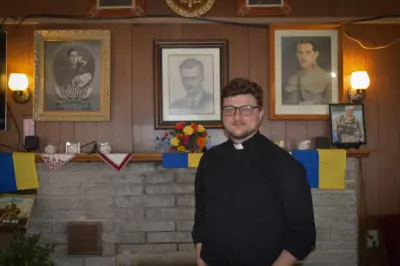
Boroyvi said. Pastor Ruslan Borovyi at the Ukrainian Homestead in Lehighton, Pa. (Photo by Ann Rejrat for the Pennsylvania Capital-Star)
Borovyi tries to preach hope to his parishioners. But he said hope is not knowing that everything will be all right, but believing that the steps people take matter.
As the war drags on, many Ukrainian Americans said they will keep doing what they can to help their former home from Pennsylvania.
Ulana Prociuk’s parents came to the United States after World War II. She is still in touch with her Ukrainian heritage and works as an administrator for the Ukrainian Homestead.
Prociuk grew up hearing about Russian and German tanks moving across the country during World War II and just talking about the three-year war now makes her tear up. She has family in Ukraine and said they are scared. But she said she believes the Ukrainian people are resilient and will fight for as long as it takes to defend their freedom.
After hearing her parents’ stories about living under the Soviet Union’s iron fist, she feels blessed to enjoy the freedoms offered to her here. She had family, including her grandmother, sent to Siberia as punishment back then. It was a trip her grandmother did not survive. She died on the cattle car and “they just threw her (body) out,” Prociuk said.
To her, many Americans do not understand what it was like under a communist regime and why stopping Russia from taking over Ukraine is so important.
After Borovyi’s service, Eugenia Podalak sat on a chair resting both hands on top of her cane, talking about her childhood.
She said Ukrainians only want to live free, while not giving up their independence as a country. Her family left Ukraine in 1945 and moved to America in 1949. She first settled in Philadelphia before moving to Lehighton.
Like Prociuk, Podalak had family members sent to Siberia as punishment. Eugenia Podalak in the Ukrainian Homestead in Lehighton, Pa. (Photo by Ann Rejrat for the Pennsylvania Capital-Star)
Now 87, Podalak remembers living in occupied Ukraine and bombings by both the Germans and Russians. One of her most vivid childhood memories is going to the basement of her house only minutes before one bomb landed in the family kitchen.
“I just hope people in the United States understand that Ukrainians, we want our own country,” Podalak said.
She is American but remains connected to her home country and its traditions. Her children and grandchildren all speak Ukrainian.
As the war drags on
Sitting outside of a Starbucks in Dickson City on an overcast Monday, Alexii Chankov is dressed in a New York City Ranger’s sweatshirt and hat. He’s getting the attention of at least one other Rangers fan who called to Chankov at the table as he was getting into his car in the parking lot.
He grew up playing hockey in Russia and the New York City team was a natural fit when he moved there. And his love for New York sports goes beyond just the Rangers as he jokes that his favorite football team is the worst in the league– the New York Jets.
His wife, Yelena Smekodub, sat next to him in a grey sweatshirt, occasionally translating for her husband who moved to the country more recently than she did.
Watching the war drag on has been taxing for the two. They wish people would understand Ukrainians did not ask for the war, that it must defend itself, and ultimately the people just want peace. But neither has much hope in negotiations or faith that Russian President Vladimir Putin will abide by any peace agreements. Alexii Chankov and Yelena Smekodub in Dickinson City, Pa.
(Photo by Ann Rejrat for the Pennsylvania Capital-Star)
Russian citizens are also struggling with the cost of war – a conflict most of them did not want either, Smekodub and Chankov said.
In Russia, Chankov said prices for goods are soaring, putting tremendous strain on the population. Chankov also said he has a teenage nephew who’s afraid to be outside, because he might be taken to go fight in the war.
And the mental toll is getting to Russian parents as well. Chankov said a school friend who lost a son in the war was outside demanding to know where her son was and was arrested. Russia uses mass graves, so it is hard to find the dead, he said.
The divide that is forming between Russia and Ukraine is sad to both. Smekodub moved to the U.S. when it was still the Soviet Union. But even when the Soviet Union fell, she said people freely traveled between Russia and Ukraine. She compared it to traveling between Canada and the U.S.
When Russia invaded, she had an uncle in Moscow and her father was in Dnipro which is on the eastern side of Ukraine. And the Ukrainian side is now angry with the Russian side. She said her family in Ukraine often goes without electricity or running water.
“All of a sudden you have these people going, ‘Oh, we hate Ukrainians? Since when?,” Smekodub said. “And Ukrainians go, ‘We hate you Russians.’ Since when?”
To them, the problem is Putin, not the people.
One common refrain from Ukrainian Americans who spoke with Pennsylvania Capital-Star is the one good thing the Trump administration seems to have done is that it has caused the rest of Europe to come to the realization they can no longer depend on the United States.
“It’s nice to see Europe waking up because they know what’s at stake,” Groysman said.
Pennsylvania Capital-Star is part of States Newsroom, a nonprofit news network supported by grants and a coalition of donors as a 501c(3) public charity. Pennsylvania Capital-Star maintains editorial independence. Contact Editor Tim Lambert for questions: [email protected].

